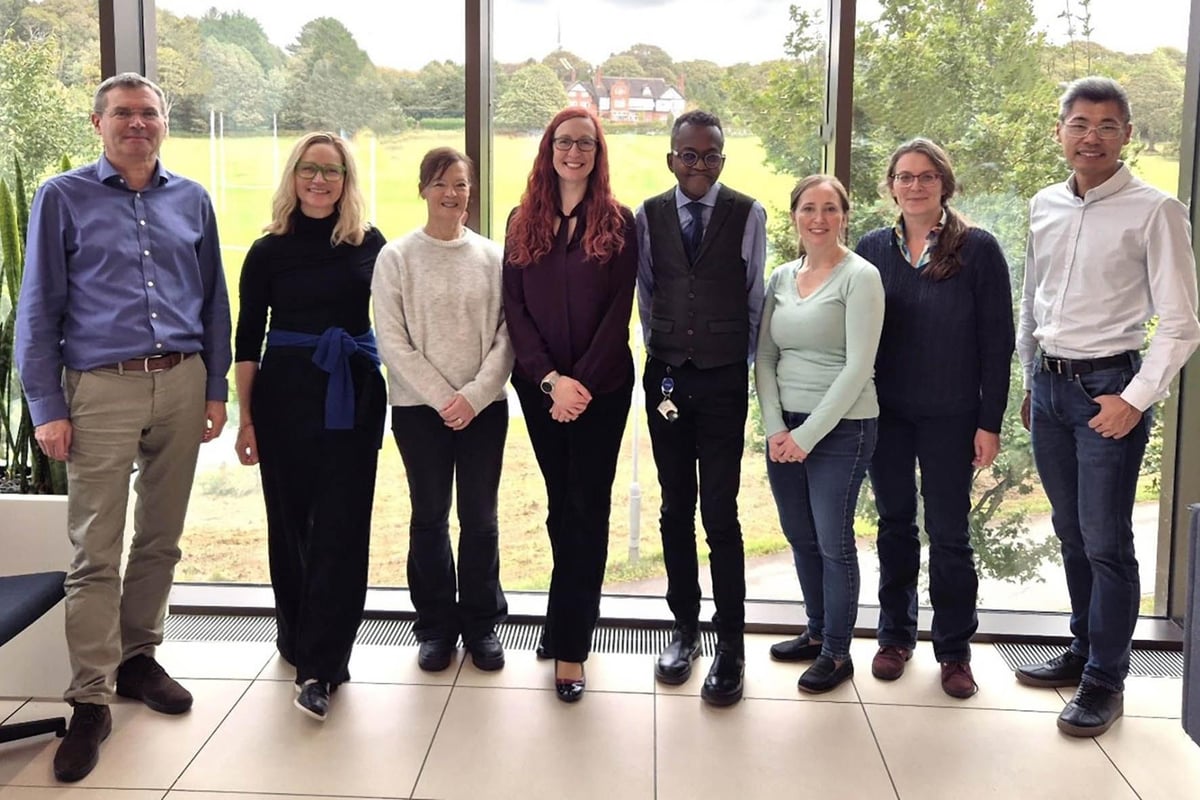Science
Lancaster University Secures £1.5 Million for Innovative Bone Disorder Tool

Lancaster University has received a funding award of £1.5 million from the Engineering and Physical Sciences Research Council (EPSRC) to develop a groundbreaking tool aimed at diagnosing bone disorders within community settings. This innovative technology will utilize laser-based techniques to measure bone chemistry, offering a safe and effective means to predict and identify various bone-related conditions before they progress.
The project is spearheaded by Dr. Jemma Kerns, who will collaborate with individuals experiencing musculoskeletal conditions and healthcare professionals to ensure the tool’s design and functionality meet real-world needs. The device will be portable, making it adaptable for use in a variety of locations, including general practitioner surgeries, pharmacies, community centres, and leisure facilities. This accessibility aims to enhance healthcare delivery while decreasing reliance on hospital visits.
Transforming Diagnosis and Treatment
Professor Charlotte Deane, Executive Chair of EPSRC, emphasized the importance of early diagnosis in improving health outcomes. She stated, “Diagnosing health conditions early and in a way that works for people’s everyday lives is vital. By enabling care closer to home as well as earlier intervention, this will help shift the system from treatment to prevention, improve outcomes, tackle health inequalities and ease pressure on hospitals.”
Statistics reveal that approximately one third of adults in the UK suffer from musculoskeletal conditions, which are the leading cause of disability, sick leave, and premature retirement. Living with these disabilities often correlates with health disparities and contributes significantly to reduced life expectancy. The new tool will not only aid in the early diagnosis of genetic and age-related musculoskeletal conditions but will also allow for monitoring changes over time in individual patients.
Dr. Kerns highlighted the potential for this technology to maximize long-term health benefits for individuals, noting that early diagnosis could significantly reduce treatment costs and lessen the burden on the National Health Service (NHS).
A Safe and Portable Solution
The project involves adapting an existing prototype into a more versatile and robust design. The proposed device will employ the SORS (spatially offset Raman spectroscopy) technique, which uses laser light to assess bone health through the skin. Unlike traditional X-ray methods, this approach does not involve ionizing radiation, making it safe for repeated use on both adults and children.
Dr. Kerns described the development of this portable technology as a significant advancement in the management of musculoskeletal conditions. She remarked, “Establishing this new portable technology will be a game changer for musculoskeletal management and will pave the way for other conditions, such as bone and breast cancers, to be more readily diagnosed and treated.”
The research team includes esteemed professionals from multiple institutions, such as Dr. Amy Saunders, Dr. Leonie Unterholzner, Dr. Olaug Grude, and Dr. Claire Mann from Lancaster University, as well as experts from University College London and University Hospitals of Morecambe Bay NHS Trust.
Professor Marwan Bukhari, a Consultant Rheumatologist at University Hospitals of Morecambe Bay NHS Trust and Honorary Clinical Professor at Lancaster University, expressed optimism about the project’s impact. He stated, “This tool could significantly improve early diagnosis and long-term outcomes for patients as well as easing the burden on hospital services by preventing fractures.”
The team remembers the late Professor Allen Goodship from University College London, whose contributions were instrumental in the project’s development.
With this funding and innovative approach, Lancaster University is positioned to revolutionize the diagnosis and treatment of bone disorders, ultimately improving healthcare accessibility and outcomes for patients across the community.
-

 Health3 months ago
Health3 months agoNeurologist Warns Excessive Use of Supplements Can Harm Brain
-

 Health3 months ago
Health3 months agoFiona Phillips’ Husband Shares Heartfelt Update on Her Alzheimer’s Journey
-

 Science2 months ago
Science2 months agoBrian Cox Addresses Claims of Alien Probe in 3I/ATLAS Discovery
-

 Science2 months ago
Science2 months agoNASA Investigates Unusual Comet 3I/ATLAS; New Findings Emerge
-

 Science1 month ago
Science1 month agoScientists Examine 3I/ATLAS: Alien Artifact or Cosmic Oddity?
-

 Entertainment5 months ago
Entertainment5 months agoKerry Katona Discusses Future Baby Plans and Brian McFadden’s Wedding
-

 Science1 month ago
Science1 month agoNASA Investigates Speedy Object 3I/ATLAS, Sparking Speculation
-

 Entertainment4 months ago
Entertainment4 months agoEmmerdale Faces Tension as Dylan and April’s Lives Hang in the Balance
-

 World3 months ago
World3 months agoCole Palmer’s Cryptic Message to Kobbie Mainoo Following Loan Talks
-

 Science1 month ago
Science1 month agoNASA Scientists Explore Origins of 3I/ATLAS, a Fast-Moving Visitor
-

 Entertainment2 months ago
Entertainment2 months agoLewis Cope Addresses Accusations of Dance Training Advantage
-

 Entertainment4 months ago
Entertainment4 months agoMajor Cast Changes at Coronation Street: Exits and Returns in 2025









